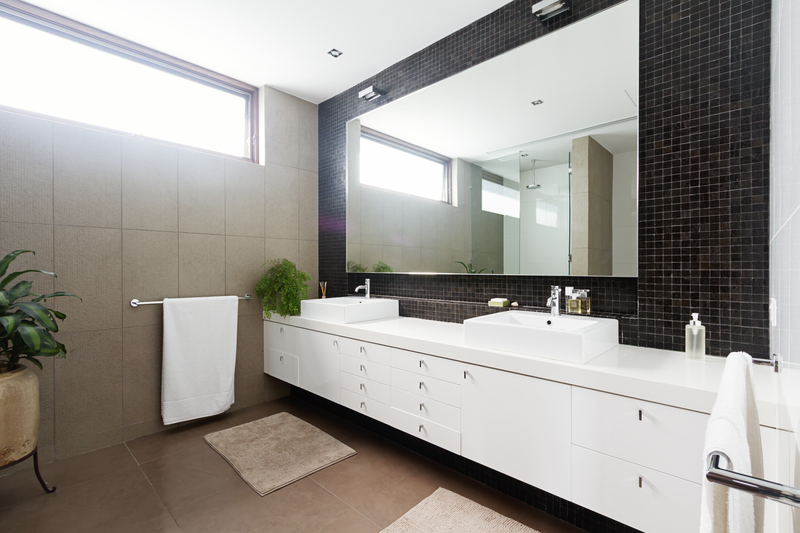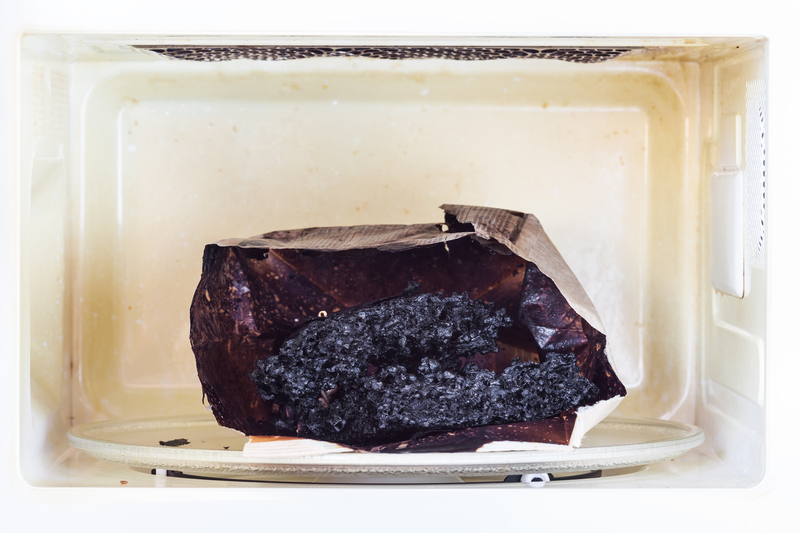Dust-Free Zones: Expert Tips for an Allergen-Minimized Home
Posted on 03/10/2025
Dust-Free Zones: Expert Tips for an Allergen-Minimized Home
Maintaining a dust-free home is not merely a quest for cleanliness--it's an essential step for achieving a healthier, allergen-minimized indoor environment. From reducing allergy symptoms to improving air quality and overall well-being, keeping dust at bay can have a profound impact on your everyday life. In this comprehensive guide, we'll explore a range of expert-backed strategies to help you establish dust-free zones and minimize allergens in your home, ensuring your living space remains fresh and comfortable year-round.
Understanding Household Dust: What It Is and Why It Matters
Household dust is a complex mix of tiny particles, including dead skin cells, pet dander, pollen, fabric fibers, soil, mold spores, and even microscopic insect debris. These components serve as common triggers for allergies and can exacerbate respiratory issues such as asthma and sinusitis. Therefore, knowing what you're up against is the first step toward creating effective dust reduction strategies.
Why Reducing Dust and Allergens At Home is Essential
- Allergy Relief: Lowering dust levels can significantly reduce allergy and asthma symptoms, leading to improved sleep and quality of life.
- Cleaner Surfaces: Less dust means less time spent cleaning and dusting surfaces.
- Fresher Air: Minimizing airborne dust results in cleaner, fresher indoor air for your family.
- Protects Electronics: Reducing dust build-up extends the life of electronic devices and appliances.

Expert Tips for Creating Dust-Free, Allergen-Minimized Spaces
Transforming your living areas into dust-free zones requires a multifaceted approach. Professional house cleaners and allergy specialists offer a range of simple yet highly effective strategies to minimize allergens in your living environment.
1. Develop a Routine Cleaning Schedule
- Dust Surfaces Properly: Use a damp microfibre cloth for dusting, as dry dusters only move particles around.
- Vacuum Regularly: Invest in a vacuum with a high-efficiency particulate air (HEPA) filter that captures microscopic particles and prevents them from being recirculated into the air.
- Don't Forget Out-of-Sight Areas: Dust and vacuum under furniture, behind appliances, and along baseboards weekly.
Pro Tip: Always clean from top to bottom to prevent dust from resettling on already-cleaned surfaces.
2. Upgrade Your Air Filtration System
- Use High-Quality HVAC Filters: Choose HEPA or MERV 13 or higher rated filters for your home's heating and cooling systems.
- Change Filters Regularly: Replace air filters every 1-3 months, or as recommended by the manufacturer, to maximize filtration efficiency.
- Add Standalone Air Purifiers: Consider portable air purifiers with true HEPA filters in bedrooms and high-traffic areas to capture airborne dust and allergens.
3. Control Humidity Levels
- Maintain Relative Humidity: Aim for a humidity range between 40-50% to discourage dust mites and mold growth.
- Use Dehumidifiers/Bathroom Fans: Install or run dehumidifiers in damp areas and always turn on vent fans while showering or cooking.
Why it Matters: Dust mites thrive in moist environments. Managing humidity disrupts their life cycle and reduces their presence indoors.
4. Declutter For Simpler Dust Management
- Reduce Knick-Knacks: Limit decorative objects, books, and soft toys on open shelves--these are dust magnets.
- Organize Storage: Store items in closed cabinets and containers to minimize exposed surfaces.
- Keep Floors Clear: Less clutter means fewer places for dust to settle and easier cleaning.
5. Select Allergy-Friendly Furnishings and Materials
- Opt for Hard Flooring: Tile, vinyl, hardwood, or laminate flooring collects less dust than wall-to-wall carpet.
- Choose Washable Window Treatments: Replace heavy drapes with blinds or machine-washable curtains.
- Pick Minimalist Furniture: Simple lines and closed shelving are easier to wipe down regularly.
Bonus Tip: If you must have rugs, use washable, low-pile versions and clean them frequently.
6. Wash Bedding and Fabrics Frequently
- Launder Weekly: Clean sheets, pillowcases, and blankets in hot water (at least 130?F/54?C) to kill dust mites.
- Clean Throw Pillows & Curtains: Wash or vacuum these at least monthly to eliminate accumulated dust.
- Use Allergy-Proof Encasements: Wrap pillows and mattresses in zippered, dust-mite-proof covers.
7. Establish Pet-Friendly Dust-Free Policies
- Groom Pets Often: Bathe and brush pets outside to reduce hair and dander indoors.
- Limit Bedroom Access: Keep pets out of sleeping areas, especially for those with severe allergies.
- Vacuum Pet Areas Regularly: Use HEPA vacuums to clean pet beds, litter boxes, and feeding areas.
8. Seal Gaps and Entry Points
- Weatherstrip Windows and Doors: Blocking drafts keeps outdoor dust and pollen from entering your home.
- Seal Cracks: Use caulk or weather-resistant sealants around baseboards, vents, and utility openings.
- Install Door Mats: Place mats both outside and inside all entryways to trap dirt and dust.
Room-by-Room Guide to Dust Reduction
Living Room
- Vacuum furniture, drapes, and rugs weekly using a HEPA filter vacuum.
- Limit fabric-upholstered pieces and choose leather or vinyl when possible.
- Wipe down electronics with anti-static cloths to prevent dust build-up.
Bedrooms
- Launder bedding every week and vacuum under the bed.
- Minimize decorative pillows and stuffed animals.
- Keep wardrobes and dressers closed to limit dust infiltration.
Kitchen
- Clean the tops of cabinets and fridge monthly.
- Use exhaust fans while cooking to reduce sticky, dust-attracting residues.
- Store dry goods in airtight containers to avoid attracting pests and dust.
Bathrooms
- Wash bath mats and shower curtains regularly.
- Run exhaust fans to maintain optimal humidity levels.
- Wipe down surfaces weekly, especially window sills and shelves.
Smart Products for Maintaining a Dust-Free Home
- Robotic Vacuums: Programmed for daily cleaning, they keep floors consistently dusted.
- Electrostatic Cloths: Attract and trap dust, perfect for blinds, electronics, and delicate surfaces.
- Lint Rollers: Ideal for quick pickups from upholstery, lampshades, and fabrics.
- High-Efficiency Air Purifiers: Create zones of clean air, especially in sleeping and living areas.
Common Mistakes That Sabotage Dust-Free Efforts
- Ignoring Air Vents and Fans: These accumulate and recirculate dust. Clean them quarterly.
- Dry Dusting: Always use damp methods to avoid scattering allergens into the air.
- Overlooking Floor Mats: Skipping entryway mats lets in more dust and dirt from outside.
- Neglecting to Wash Cleaning Tools: Dirty mops and cloths can spread more dust than they remove. Clean after every use.
Professional Insights: When to Seek Outside Help
If allergy symptoms persist despite your diligent efforts, consulting a certified indoor air quality specialist or hiring professional cleaning services equipped with industrial-grade HEPA vacuums and specialized treatments may be necessary. These experts can identify hidden sources of allergens--such as mold or poorly sealed ducts--and offer targeted solutions to permanently lower household dust levels.
FAQs: Essential Answers About Reducing Household Dust and Allergens
- How often should I clean to keep dust under control? - A weekly routine for all primary surfaces, with daily maintenance in high-traffic spaces, is best for maintaining allergen-minimized zones.
- What rooms should I prioritize for dust reduction? - Start with the bedroom, as we spend most of our time there, and expand to living and family rooms, then beyond.
- Are air purifiers effective against dust and dander? - Yes, especially devices equipped with true HEPA filters, which can trap particles as small as 0.3 microns.
- Can reducing household dust really improve my health? - Absolutely. Many people see a dramatic decrease in allergy symptoms and respiratory complaints when household dust and allergens are minimized.

Conclusion: Your Pathway to a Healthier, Allergen-Reduced Home
Crafting dust-free zones and actively minimizing allergens at home is a manageable yet impactful endeavor that pays off in increased comfort, cleaner air, and better overall health. By adopting expert tips such as smart cleaning routines, effective air filtration, humidity management, strategic decluttering, and allergy-friendly furnishings, you can create an environment where you and your loved ones can thrive without the constant nuisance of dust and allergens.
Start implementing these actionable steps today and breathe easier in your fresh, allergen-minimized sanctuary. For more in-depth advice on indoor air quality, cleaning tips, or help from experienced professionals, explore our resource center or reach out for a personalized assessment.
Further Resources for a Dust-Free, Allergy-Friendly Home
- CDC Guide to Home Cleaning and Disinfection
- Asthma and Allergy Foundation: Allergy Treatment
- EPA Indoor Air Quality Tips
Transform your home into a sanctuary from dust and allergens--embrace these expert strategies for a dust-free, healthier living space year-round.



